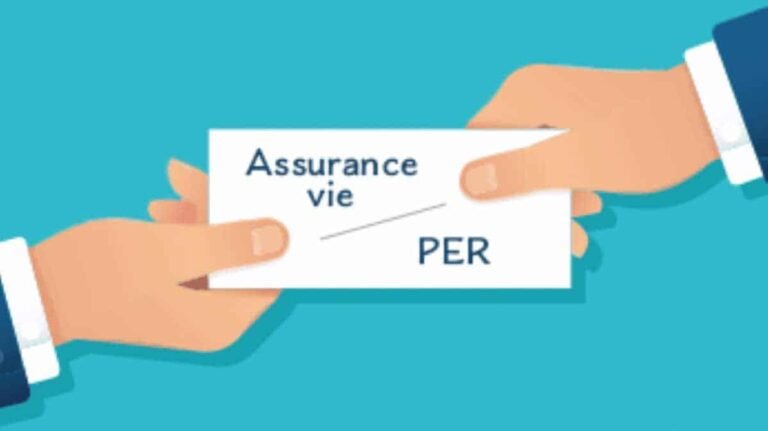
The Pension Savings Plan (PER) has become popular with millions of savers in less than four years. One of the most important advantages is that the saver’s contributions are tax-deductible. However, the saved money is blocked until retirement age, except in the event of unforeseen events such as a life event or the purchase of a home, and there is tax when moving out. On the other hand, life insurance is tax efficient in case of withdrawal or death and remains available for all ages. However, there is no input VAT saving.
Preparing for your pension depends mainly on your marginal tax rate (TMI), which is the tax rate on the highest level of your income. If you do not know your TMI, you can find it in your notice of declarative status, which you receive during your online tax return.
PER: The tax choice to save tax
PER is very advantageous for saving tax. The highest taxed holders will save a lot of taxes thanks to PER.
For example, with a payment of 10,000 euros, you can save 4,100 euros (10,000 euros x 41%) if you are taxed at a marginal tax rate (TMI) of 41% (from 78,571 euros per unit), or 4,500 euros if you are taxed at an IMR of 45% (more than 168,994 euros per unit).
When you retire and choose capital withdrawal, the portion of the withdrawal that corresponds to the gain will be subject to a flat rate deduction of 30% or income tax (+17.2% social security contribution), whichever option is more beneficial. The part of the withdrawal corresponding to deductible payments will be subject to the progressive income tax. As you will logically have less pension income, it is very likely that your TMI will drop to 30% (up to €78,570 per unit).
Ultimately, you can expect a total taxation of 30% on withdrawals. In this case, the simple comparison between the input tax saving (41 or 45%) and the output tax (30%) makes PER very advantageous.
Life insurance for those who pay little or no tax
If you do not pay income tax, it is not interesting to take out a PER. It is better to opt for life insurance which is available at all times in case of need.
If your tax rate is 11%, a tax-deductible payment on PER can save you some tax. However, this benefit is not enough to justify the inaccessibility of your savings until retirement. It is therefore preferable to choose payouts on a life insurance contract.
Choose PER if your tax rate is 30%, especially if you plan to keep it for a long time
It is common to have a tax rate of 30% because this console is very wide (between 27,479 euros and 78,570 euros per unit). The tax-deductible payments of PER allow you to save 30% on your tax. In many cases, however, the exit tax will be equivalent to 30% for payments taxed according to the income tax scale and for income subject to the flat rate. So why might PER be attractive without a tax differential?
In reality, this operation should be considered a cash advance from the government, a form of very advantageous zero-interest loans when debtor interest rates have been high for a year. With PER, you can invest and grow money that you would have had to pay in tax. In the long term, this benefit can be very significant, as your savings can potentially earn a lot of interest.
Example for better understanding
Imagine that you are married, that you are 45 years old and have a good salary that has allowed you to save 10,000 euros this year. You have decided to invest this money in a PER. With a tax rate of 30%, you save 3,000 euros in income tax. Without this investment, you could have had €7,000 in savings after income tax to invest in another investment such as a life insurance contract.
Assuming your investment returns 3% per year for 20 years (until your retirement), you will have accumulated 18,061 euros on your PER. This represents the €10,000 you have invested as well as the accumulated interest over 20 years.
On your life insurance contract, you will have saved 12,643 euros, assuming that the invested 7,000 euros also gave 3% per year for 20 years.
When you retire, you want your money back. On PER, you will receive capital after tax of 12,643 euros (18,061 euros x (1-30%)). On the life insurance agreement, you get a net capital of 11,672 euros. We assume here that the annual earnings benefit applicable to life insurance contracts of more than eight years is in full effect (9,200 euros for a married couple). The contract would then only be subject to social contributions of 17.2% of the share of income (5,643 euros). In our example, PER gives you a profit of 971 euros (12,643 euros – 11,672 euros).
In summary, if you are ready to tie up some of your money to prepare for your retirement, PER is very beneficial if you are taxed at 45 or 41%. If you have time ahead of you, it is also, but to a lesser extent, if you are taxed at 30%. Finally, if you are not taxed or if you are taxed at 11%, it is better to save for a life insurance policy that you can draw on if needed.